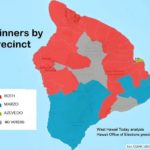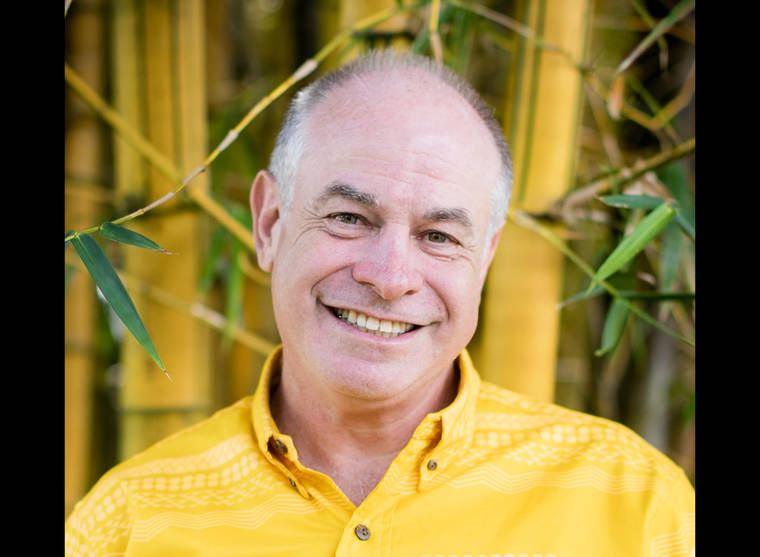Mayor Harry Kim didn’t prevail in a single one of the Big Island’s 43 voting precincts while coming in third behind two of the 14 challengers for the county’s top elected post.
That’s according to a West Hawaii Today analysis of precinct reports released Sunday by the state Office of Elections. The analysis showed front-runner Mitch Roth taking 32 precincts, with second-place Ikaika Marzo securing nine.
County Highway Division Chief Neil Azevedo, who came in fourth, grabbed the Keaukaha precinct, while Roth and Marzo tied for a mail-only Pahoa precinct.
It’s unusual for an incumbent not to prevail in at least one precinct, especially in such a crowded field. Kim didn’t actively campaign, instead concentrating on navigating the coronavirus pandemic, and he repeatedly said he would focus on his job and let the voters decide.
Two political experts are unsure whether Kim was overwhelmed by strong challengers or if voters might have just tired of his leadership and were ready for a change. The mayor’s popularity wasn’t improved by being the public face of not only the COVID-19 crisis on the island, but also the ongoing controversy over siting of the Thirty Meter Telescope on Maunakea after Gov. David Ige delegated to him what is typically a state issue.
“I was shocked,” said Colin Moore, director of the Public Policy Center at the University of Hawaii at Manoa. “I felt like since it was such a crowded race that he would take second place. … Usually a really crowded field in a primary benefits the incumbent.”
Neal Milner, retired University of Hawaii political science professor, said Kim had “formidable opposition.”
“It probably was not as much an anti-Kim vote but a lack of enthusiasm,” said Milner. “He was on the forefront of TMT and maybe the pandemic and there’s just enough for the people to want to look somewhere else. … I don’t think he’s made any huge gaff.”
Moore said Marzo’s performance was “pretty impressive.” Marzo benefited from the combination of being a well-known social media figure during a pandemic where traditional campaigning wasn’t possible and an all-mail election that brought in a lot of new and infrequent voters.
“He became sort of a folk hero on social media in the 2018 lava flow,” Moore said. “He already had that social media infrastructure in place that put him at a huge advantage.”
Roth, with a campaign war chest of close to $200,000, had almost double Marzo’s fundraising. Roth also prevailed in votes — garnering 31.5% in the 15-candidate race compared to Marzo’s 21.4%.
As expected, Marzo pulled most of the Puna and Ka‘u precincts, spreading across a good portion of the predominantly rural southern end of the island. Roth prevailed in the more urban, more well-to-do regions of the county, taking all of West Hawaii north of Captain Cook, as well as all of the northern half of the island and into urban Hilo.
“I’ve been told by a lot of people it was between me and different people. A lot of those different people are no longer in the race,” Roth said, adding that his team will continue balancing safety with campaigning while working to get his message out. “It’s important to us we change the philosophy of government to helping people thrive and succeed. We have a lot of people that are struggling right now and we want to do all we can to restore our community to a safe, healthy livelihood. We want to bring back some hope.”
Email Nancy Cook Lauer at ncook-lauer@westhawaiitoday.com.










